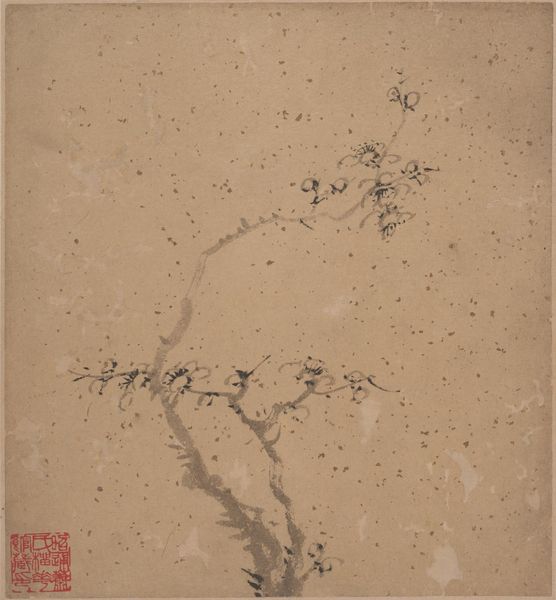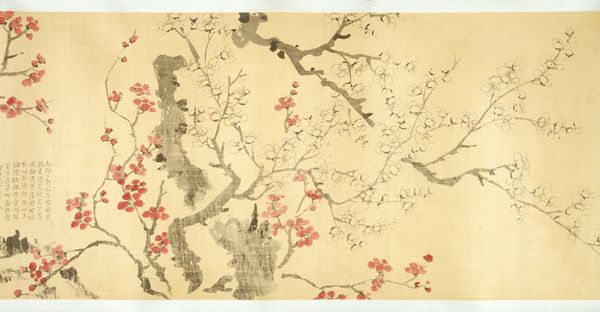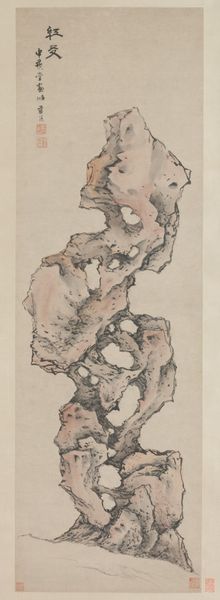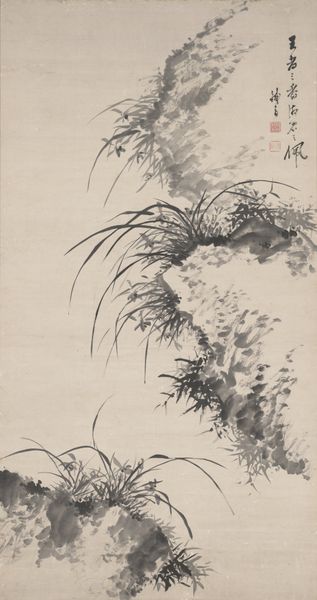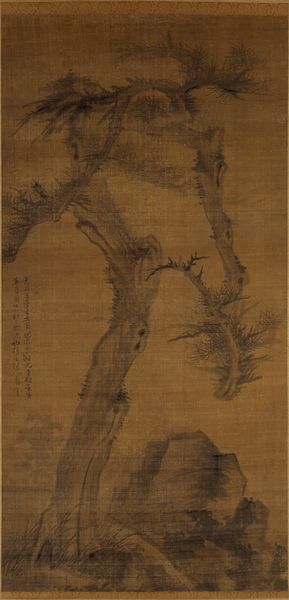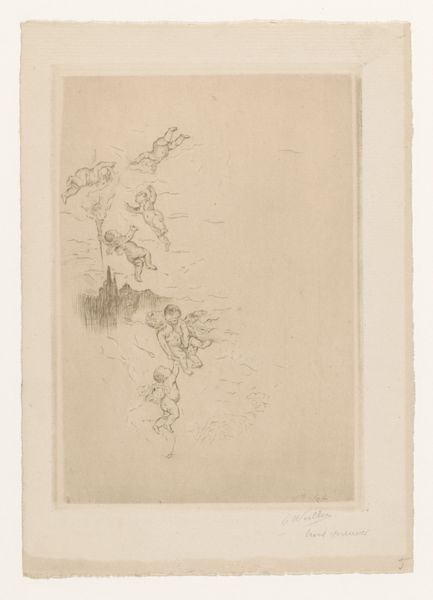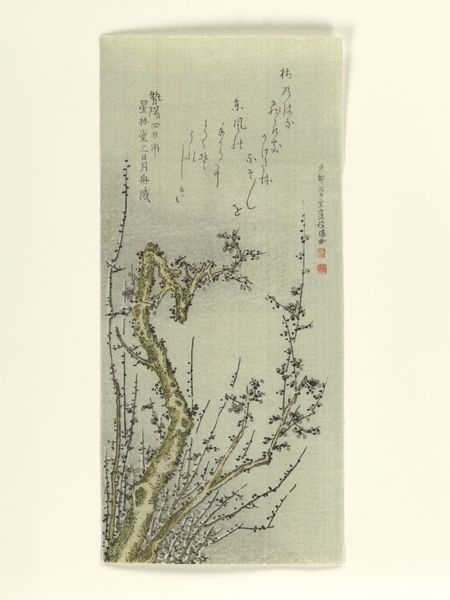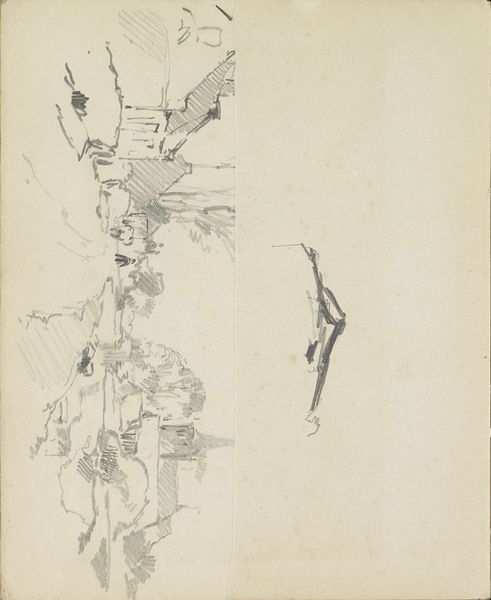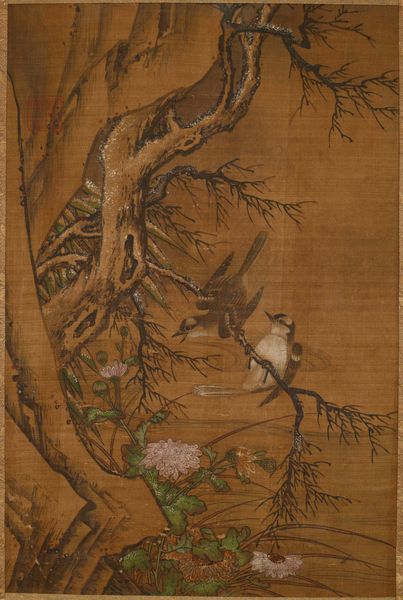
painting, paper, watercolor, hanging-scroll, ink, color-on-paper
#
painting
#
asian-art
#
landscape
#
charcoal drawing
#
paper
#
watercolor
#
hanging-scroll
#
ink
#
color-on-paper
#
orientalism
#
china
#
watercolor
#
calligraphy
Dimensions: 66 5/8 x 18 1/8 in. (169.23 x 46.04 cm) (image)95 1/4 x 25 1/4 in. (241.94 x 64.14 cm) (overall, without roller)
Copyright: Public Domain
Here, in the Minneapolis Institute of Art, is a scroll painting entitled "Red Jade and Coral" by Cheng Yi. The subject is a scholar's rock, adorned with flora. Rocks in Chinese art symbolize strength, endurance, and a connection to the natural world, often representing a microcosm of the universe. The rock is depicted in monochrome ink, while the red jade and coral add a vibrant splash of color. This contrast is not merely aesthetic; it speaks to the interplay between the enduring, stoic nature of the rock and the ephemeral beauty of life. We find the enduring motif of the rock throughout art history, from ancient fertility symbols to contemporary sculpture. The rock itself takes on new symbolic weight each time it is interpreted. Observe the wisteria cascading down, a symbol of longevity. It reminds me of similar motifs found in Renaissance tapestries, where flowing fabrics hint at the passage of time, and the continuity of life. These visual echoes engage viewers on a subconscious level, stirring ancestral memories and shared human experiences.
Comments
minneapolisinstituteofart about 2 years ago
⋮
From She-hsien in Anhui province, Cheng-I was a close friend of the famous Anhui artist, Ch'eng Sui (1605-1691). A landscape painter and also inkmaker, he wrote a two-volume history of ink. His seal, impressed here, refers to the thirty-six peaks of Huang-shan (Yellow Mountain), the magnificent Anhui range that inspired so many paintings and poems. Deceptively modern in its impact, the construction of this stark composition recalls the reductionist compositions of the Anhui masters. The brushwork, however, is more calligraphic with its long, moist, modulated brushstrokes than is most Anhui dry-line painting. "Red Jade and Coral"; a tall angular rock formation with red fu-sang flowers (red hibiscus), can be read as either a towering mountain peak or an oversized garden rock. Ch'eng's prose inscription states that he combined the brushwork in a painting he saw by Hsu-wei (1521-93) called "White Rock", with a work by Ch'en Hung-shou (1599-1652) of red fu-sang fruit. He states, "Here I have combined my imitations of these two works into this painting of "Red Jade and Coral"
Join the conversation
Join millions of artists and users on Artera today and experience the ultimate creative platform.
